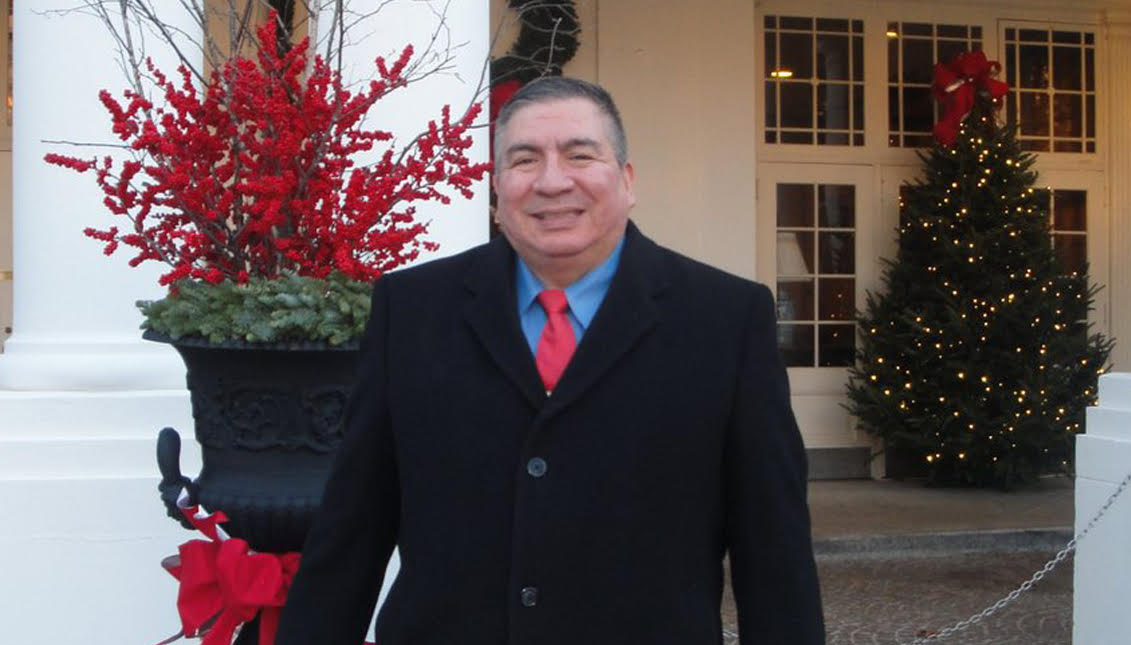
Lawrence Romo: The Latino tasked with renaming U.S. Army bases named for Confederate leaders
Romo was appointed to the House Armed Services Committee’s renaming commission on March 8.
George Floyd, Breonna Taylor, and Elijah McClain have now become household names in the United States and beyond.
Police brutality is not a new phenomenon, but the deaths of Floyd, Taylor, McClain and many others have shaken the nation and the world and forced society to face its uncomfortable past and address the systemic issues that persist today.
In response to the lack of justice, many Confederate statues were removed, either by order from local governments, or forcefully by protesters.
More than 100 Confederate monuments, statues and symbols have been removed since police killed George Floyd.
— AJ+ (@ajplus) November 25, 2020
But Confederate symbolism still lives on in state flags: https://t.co/4VXQLdp1X6 pic.twitter.com/EsqgTLKfa5
The history of naming Army installations after Confederate officers cannot be separated from this country’s long history of racism.
Four of the Confederate-named bases were established at the start of World War I, and the others at the start of World War II, at a time when the Army was in recruitment mode, and attempting to appeal to young, Southern white men.
As the nation mobilized for both world wars, political leaders made amendments to Jim-Crow-era laws to allow more men of color to enlist. But according to the Pentagon’s official history of racial integration in the armed forces, it was concluded that these changes actually created federally-sponsored segregation.
During this time, Southern states were promoting the “Lost Cause” ideology, which portrayed enslaved people as happy and their owners as benevolent, and viewed the Confederacy’s rebellion as nothing more than an honorable struggle for the Southern way of life.
From this perspective, memorializing Confederate soldiers seemed reasonable, as it was thought that the war was fought over states’ rights, not slavery itself.
Army officials stated that they named the bases in the spirit of reconciliation, not division. The generals were viewed as tragic heroes, not treasonable racists.
RELATED CONTENT
Rep. Anthony Brown, an African American congressman who serves as vice-chair of the House Armed Services Committee, told Vox that these Confederate soldiers and officers “wrongly fought to protect the institution of slavery and would have denied Black Americans from serving in the military.”
More from Maryland Rep. Anthony Brown about the split around a bill that would strip the names of Confederate leaders from military bases. #PoliticsNation pic.twitter.com/r8I5pq8NTC
— Reverend Al Sharpton (@TheRevAl) November 22, 2020
“Removing these names will be another step in an honest accounting of our history and an expression that we continue to strive to form a more perfect union,” Brown continued.
Currently, 10 military bases across the U.S remain named after Confederate generals. But that is about to change, with Lawrence Romo in charge of renaming all the bases.
Huge news! The CHC applauds @HASCDemocrats Chair Adam Smith for naming Latino leader Lawrence Romo to the Confederate Base Naming Commission.
— Hispanic Caucus (@HispanicCaucus) March 8, 2021
CHC also thanks HASC CHC Members @RepRubenGallego, @RepFilemonVela, @RepCarbajal, & @RepEscobar for ensuring the inclusion of a Latino. https://t.co/tek4rNcLc1
House Armed Services Committee Chairman, Adam Smith, announced Romo’s official appointment to the renaming commission. Smith’s first choice, Lonnie Bunch, had to withdraw for personal reasons, but Smith expressed just as much confidence in Romo’s ability to lead.
Romo is currently the national commander of the American G.I Forum, a civil rights organization that has been serving Hispanic veterans since 1948. He is also an Air Force veteran and during the Obama administration, served as the head of the Selective Service System.
“As the commission begins its work, it is critically important that its members represent the diversity of our great country,” Smith said in a statement. He also explained that Romo’s history of service will bring the necessary perspectives needed to perform this job well.
Rep. Ruben Gallego showed his support for Romo on Twitter.
“Lawrence Romo is an excellent choice to join this Commission. He brings a lifetime of national service & diversity to the panel. Let’s get traitor’s names off our bases,” he tweeted.










LEAVE A COMMENT: